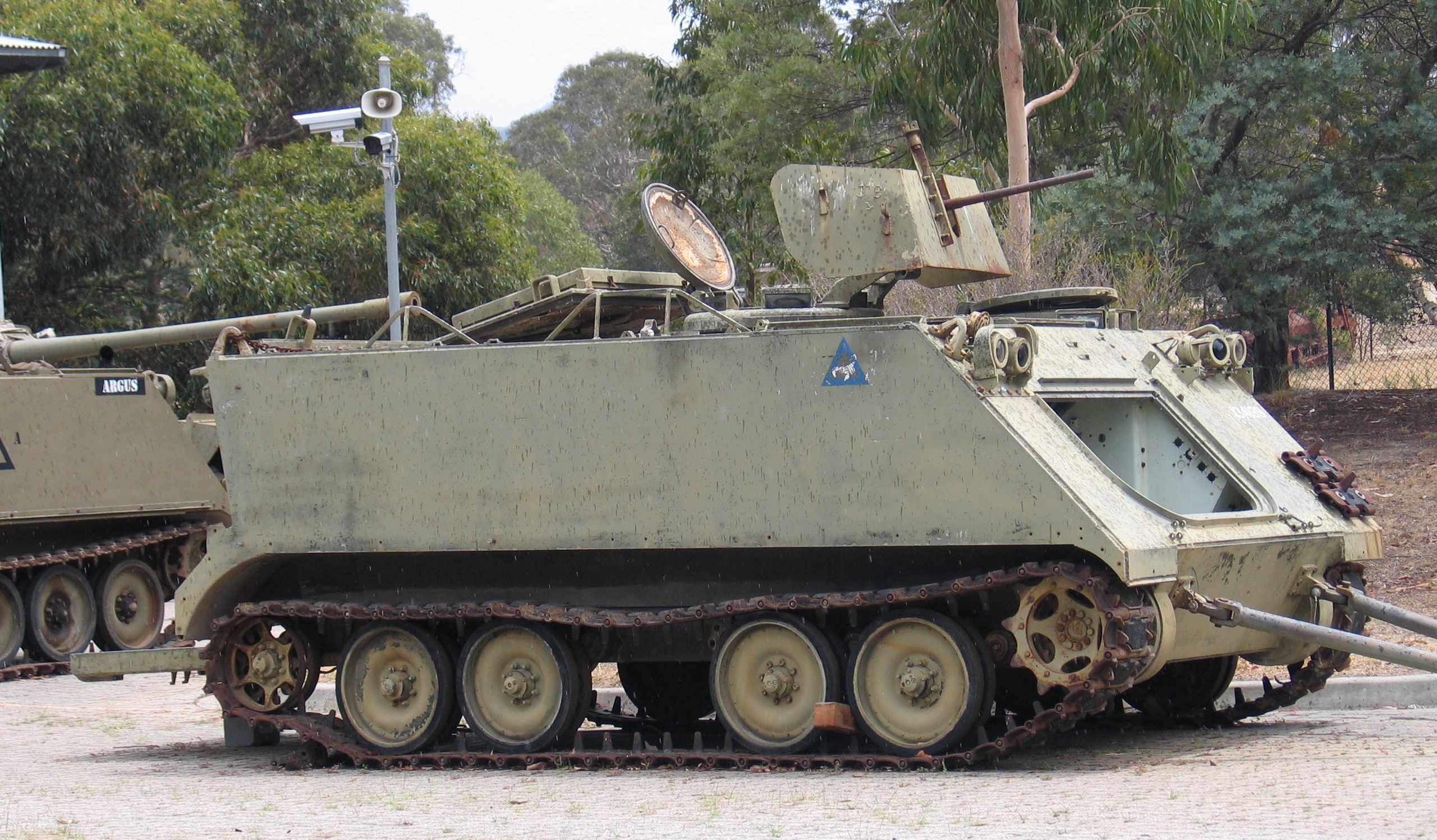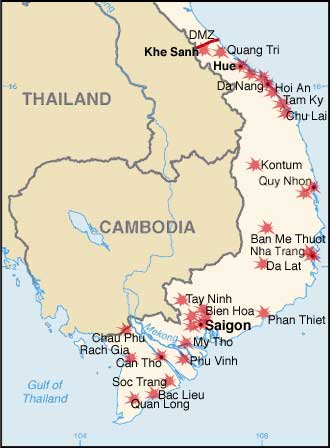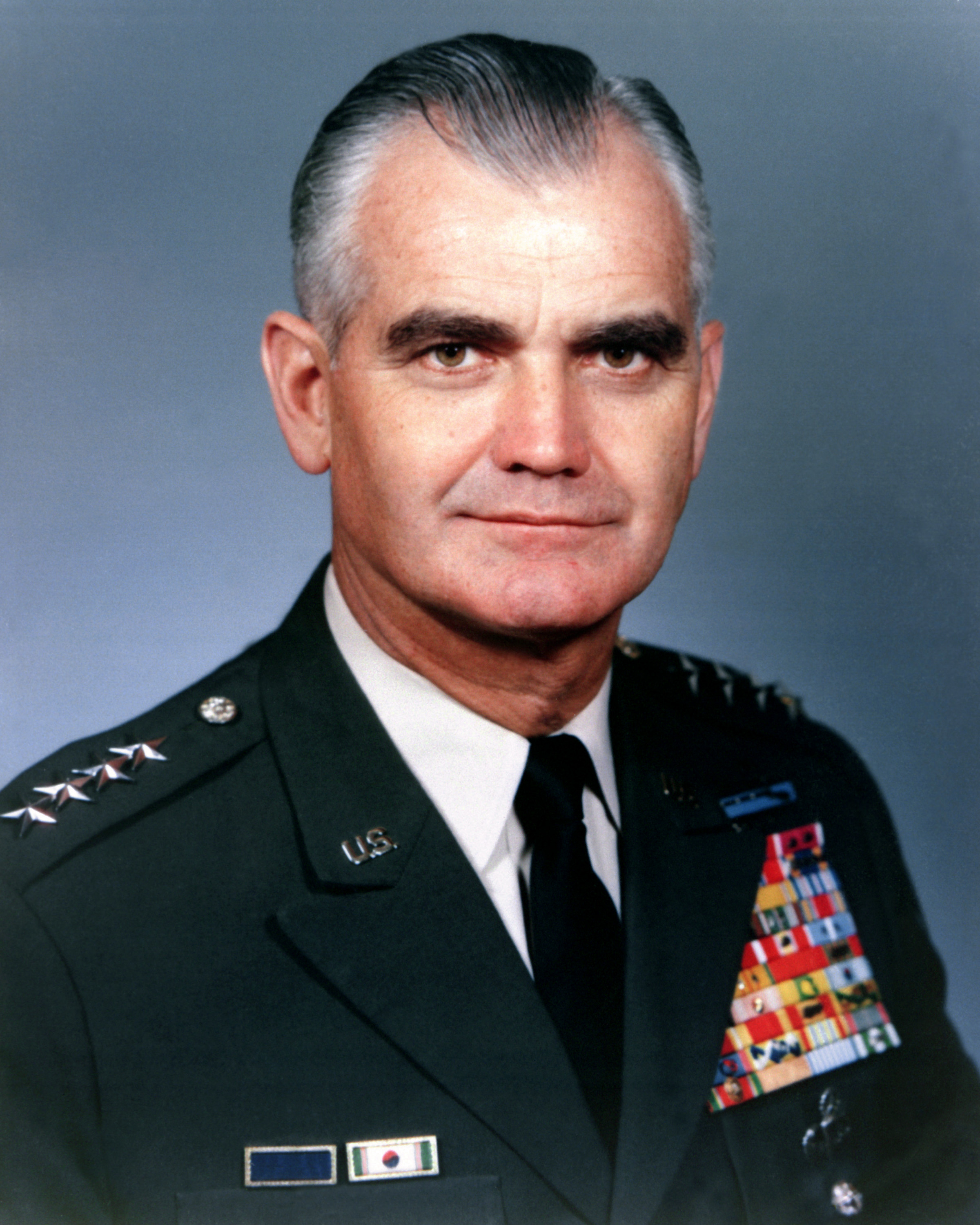|
4th Cavalry Regiment (Australia)
The 3rd/4th Cavalry Regiment is an armoured unit within the Australian Army's Royal Australian Armoured Corps. Formed in 1981 with the amalgamation of the 3rd Cavalry Regiment and the 4th Cavalry Regiment, from 1986 to 2014 the unit consisted of an independent squadron, B Squadron 3rd/4th Cavalry Regiment, within the 3rd Brigade in Townsville, Queensland. From 2017, B Squadron 3rd/4th Cavalry Regiment has been the training support and logistics squadron within the School of Armour at Puckapunyal in Victoria. History 3rd Cavalry Regiment The 3rd Cavalry Regiment was formed in beginning of 1967 when, as a result of a re-organisation of the units of the Royal Australian Armoured Corps, the 1st Armoured Personnel Carrier Squadron which was serving in Vietnam at the time, was renamed as 'A' Squadron, 3rd Cavalry Regiment. At the same time 'B' Squadron, 3rd Cavalry Regiment was formed in Australia to provide a follow-on force and relieve 'A' Squadron at the end of their tour. Equipp ... [...More Info...] [...Related Items...] OR: [Wikipedia] [Google] [Baidu] |
Australian Army
The Australian Army is the principal Army, land warfare force of Australia, a part of the Australian Defence Force (ADF) along with the Royal Australian Navy and the Royal Australian Air Force. The Army is commanded by the Chief of Army (Australia), Chief of Army (CA), who is subordinate to the Chief of the Defence Force (Australia), Chief of the Defence Force (CDF) who commands the ADF. The CA is also directly responsible to the Minister of Defence (Australia), Minister for Defence, with the Department of Defence (Australia), Department of Defence administering the ADF and the Army. Formed in 1901, as the Commonwealth Military Forces, through the amalgamation of the colonial forces of Australia following the Federation of Australia. Although Australian soldiers have been involved in a number of minor and major conflicts throughout Australia's history, only during the Second World War has Australian territory come under direct attack. The Australian Army was initially composed a ... [...More Info...] [...Related Items...] OR: [Wikipedia] [Google] [Baidu] |
1st Armoured Personnel Carrier Squadron (Australia)
The 1st Armoured Personnel Carrier Squadron (1 APC Sqn) was an armoured unit of the Australian Army raised for service during the Vietnam War. Raised in 1965, the unit was deployed to South Vietnam in May 1966 to join the 1st Australian Task Force. After that 1 APC Sqn was involved in numerous operations in support of the 5th and 6th Battalions, the Royal Australian Regiment, with the most notable action coming on 18 August 1966 when the squadron was involved in the Battle of Long Tan. In January 1967, 1 APC Sqn was redesignated as 'A' Squadron, 3rd Cavalry Regiment. History Formation 1 APC Sqn has a convoluted history. Officially the unit was first raised at Puckapunyal, Victoria, on 1 July 1965; however, the squadron also draws lineage from 1 Troop, 'A' Squadron, 4th/19th Prince of Wales's Light Horse (1 Tp A Sqn 4/19 PWLH). 1 Tp A Sqn 4/19 PWLH was a Regular sub unit of a primarily Citizens Military Force light cavalry regiment. In June 1965, this unit was converted from Sala ... [...More Info...] [...Related Items...] OR: [Wikipedia] [Google] [Baidu] |
2nd Cavalry Regiment (Australia)
The 2nd Cavalry Regiment (2 CAV) is an armoured cavalry regiment of the Australian Army. Formed in 1965 as the "1st Cavalry Regiment", it is the second most senior regiment in the Royal Australian Armoured Corps. In 1970, the regiment was redesignated as the "2nd Cavalry Regiment", to differentiate it from the 1st Armoured Regiment. The regiment was based at Holsworthy until 1992 when it was allocated to the 1st Brigade based in Darwin in the Northern Territory. In late 2014 the regiment was transferred to the 3rd Brigade, and is now based in Townsville in Queensland. The unit is equipped with M1A1 tanks, ASLAV light armoured vehicles and M113AS4 APCs. History The regiment was formed in 1965 as the 1st Cavalry Regiment through the regimentation of two regular squadrons that had formed part of Citizens Military Force regiments. A Squadron was formed from A Squadron, 4th/19th Prince of Wales's Light Horse, while B Squadron was formed from A Squadron, 2nd/14th Queensland Mount ... [...More Info...] [...Related Items...] OR: [Wikipedia] [Google] [Baidu] |
Enoggera Barracks
Enoggera Barracks (also known as Gallipoli Barracks) is an Australian Army base in the northwestern Brisbane suburb of Enoggera in Queensland, Australia. It was officially established in the early 20th century when the area was used for field training, although the area was used by military units as far back as the mid-19th century. Since then it has been developed into a modern military base, which is now home to units of the 7th and 11th Brigades as well as the headquarters of the 1st Division and the 16th Aviation Brigade. History The base has a long history, having been in existence officially since 1908, although the wider area has been used for military purposes since 1855. Upon its establishment, the camp consisted of four paddocks that were used for training and drill—Bell, Fraser's, Rifle and Thompson's—and a number of rifle ranges were established there for use by civilian groups and units of the militia. Since then the base facilities have been expanded as t ... [...More Info...] [...Related Items...] OR: [Wikipedia] [Google] [Baidu] |
Battle Of Binh Ba
The Battle of Binh Ba (6–8 June 1969), also known as Operation Hammer, was a battle during the Vietnam War. The action occurred when Australian Army troops from the 5th Battalion, Royal Australian Regiment (5 RAR) fought a combined force of People's Army of Vietnam (PAVN) and Viet Cong (VC), including a company from the PAVN 33rd Regiment and elements of the VC D440 Battalion, in the village of Bình Ba, north of Nui Dat in Phuoc Tuy Province. The battle was unusual in Australian combat experience in South Vietnam as it involved fierce close-quarter house-to-house fighting, although the majority of enemy killed was through heavy artillery and air-bombardment. In response to PAVN/VC attempts to capture Binh Ba the Australians assaulted the village with infantry, armour and helicopter gunships, routing the VC and largely destroying the village itself. Such battles were not the norm in Phuoc Tuy, however, and the heavy losses suffered by the PAVN/VC forced them to temporarily leav ... [...More Info...] [...Related Items...] OR: [Wikipedia] [Google] [Baidu] |
Battle Of Coral–Balmoral
The Battle of Coral–Balmoral (12 May – 6 June 1968) was a series of actions fought during the Vietnam War between the 1st Australian Task Force (1 ATF) and the North Vietnamese People's Army of Vietnam (PAVN) 7th Infantry Division (Vietnam), 7th Division and Viet Cong (VC) Main Force units, north-east of Saigon. Following the defeat of the PAVN/VC Tet Offensive, Tet offensive in January and February, in late April two Australian infantry battalions—the 1st Battalion, Royal Australian Regiment, 1st and 3rd Battalion, Royal Australian Regiment, 3rd Battalions of the Royal Australian Regiment (RAR)—with supporting arms, were again deployed from their base at Nui Dat in Phước Tuy Province to positions astride infiltration routes leading to Saigon to interdict renewed movement against the capital. Part of the wider allied Operation Toan Thang I, it was launched in response to intelligence reports of another impending PAVN/VC offensive, yet the Australians experience ... [...More Info...] [...Related Items...] OR: [Wikipedia] [Google] [Baidu] |
Tet Offensive
The Tet Offensive was a major escalation and one of the largest military campaigns of the Vietnam War. It was launched on January 30, 1968 by forces of the Viet Cong (VC) and North Vietnamese People's Army of Vietnam (PAVN) against the forces of the South Vietnamese Army of the Republic of Vietnam (ARVN), the United States Armed Forces and their allies. It was a campaign of surprise attacks against military and civilian command and control centers throughout South Vietnam. The name is the truncated version of the Lunar New Year festival name in Vietnamese, Tết Nguyên Đán, with the offense chosen during a holiday period as most ARVN personnel were on leave. The purpose of the wide-scale offensive by the Hanoi Politburo was to trigger political instability, in a belief that mass armed assault on urban centers would trigger defections and rebellions. The offensive was launched prematurely in the late night hours of 30 January in the I and II Corps Tactical Zones of South V ... [...More Info...] [...Related Items...] OR: [Wikipedia] [Google] [Baidu] |
4th Battalion, Royal Australian Regiment
The 4th Battalion, Royal Australian Regiment (4 RAR) was an Australian Army infantry battalion and part of the Royal Australian Regiment. The battalion was formed on 1 February 1964 and was renamed the 2nd Commando Regiment on 19 June 2009. History Formation On 18 January 1952, a Royal Australian Regiment Depot was raised as a training unit for special establishment on the Order of Battle. The depot was later renamed 4 RAR on 10 March 1952. This renaming was necessary because government approval had been given to raise a battalion and not a depot. The primary function of 4 RAR at the time was to train and hold infantrymen for service in Korea. On 24 March 1960, the unit was incorporated into the School of Infantry as "Depot Company, Royal Australian Regiment". This resulted in the formation of the Infantry Centre. The political decision to raise the fourth battalion of the Royal Australian Regiment was made in 1963. Consequently, instructions for the raising of the battalion we ... [...More Info...] [...Related Items...] OR: [Wikipedia] [Google] [Baidu] |
Centurion Tank
The Centurion was the primary British Army main battle tank of the post-World War II period. Introduced in 1945, it is widely considered to be one of the most successful post-war tank designs, remaining in production into the 1960s, and seeing combat into the 1980s. The chassis was adapted for several other roles, and these variants have remained in service. It was a very popular tank with good armour, manoeuvrability, and armament. Development of the Centurion began in 1943 with manufacture beginning in January 1945. Six prototypes arrived in Belgium less than a month after the war in Europe ended in May 1945. It entered combat with the British Army in the Korean War in 1950 in support of the UN forces. The Centurion later served on the Indian side in the Indo-Pakistani War of 1965, where it fought against US-supplied M47 and M48 Patton tanks, and it served with the Royal Australian Armoured Corps in the Vietnam War. Israel's army used Centurions in the 1967 Six-Day War, th ... [...More Info...] [...Related Items...] OR: [Wikipedia] [Google] [Baidu] |
Alvis Saladin
The FV601 Saladin is a six-wheeled armoured car developed by Crossley Motors and later manufactured by Alvis. Designed in 1954, it replaced the AEC Armoured Car in service with the British Army from 1958 onward. The vehicle weighed 11 tonnes, offered a top speed of 72 km/h, and had a crew of three. Saladins were noted for their excellent performance in desert conditions, and found favour with a number of Middle Eastern armies accordingly.''Middle East Economic Digest (1968)''. Collard, Elizabeth, Volume 12 pp. 131—173. They were armed with a 76 mm low-pressure rifled gun which fired the same ammunition as that mounted on the FV101 Scorpion. The Saladin also spawned an armoured personnel carrier counterpart, the Alvis Saracen. Despite the vehicle's age and dated design, it is still in use in a number of countries in secondary roles. History Development Following the end of the Second World War, the British Army issued a requirement for a new, 6×6 wheeled armoured v ... [...More Info...] [...Related Items...] OR: [Wikipedia] [Google] [Baidu] |
Australian 2nd Cavalry Regiment
The 2nd Cavalry Regiment (2 CAV) is an armoured cavalry regiment of the Australian Army. Formed in 1965 as the "1st Cavalry Regiment", it is the second most senior regiment in the Royal Australian Armoured Corps. In 1970, the regiment was redesignated as the "2nd Cavalry Regiment", to differentiate it from the 1st Armoured Regiment. The regiment was based at Holsworthy until 1992 when it was allocated to the 1st Brigade based in Darwin in the Northern Territory. In late 2014 the regiment was transferred to the 3rd Brigade, and is now based in Townsville in Queensland. The unit is equipped with M1A1 tanks, ASLAV light armoured vehicles and M113AS4 APCs. History The regiment was formed in 1965 as the 1st Cavalry Regiment through the regimentation of two regular squadrons that had formed part of Citizens Military Force regiments. A Squadron was formed from A Squadron, 4th/19th Prince of Wales's Light Horse, while B Squadron was formed from A Squadron, 2nd/14th Queensland Mount ... [...More Info...] [...Related Items...] OR: [Wikipedia] [Google] [Baidu] |





.jpg)
